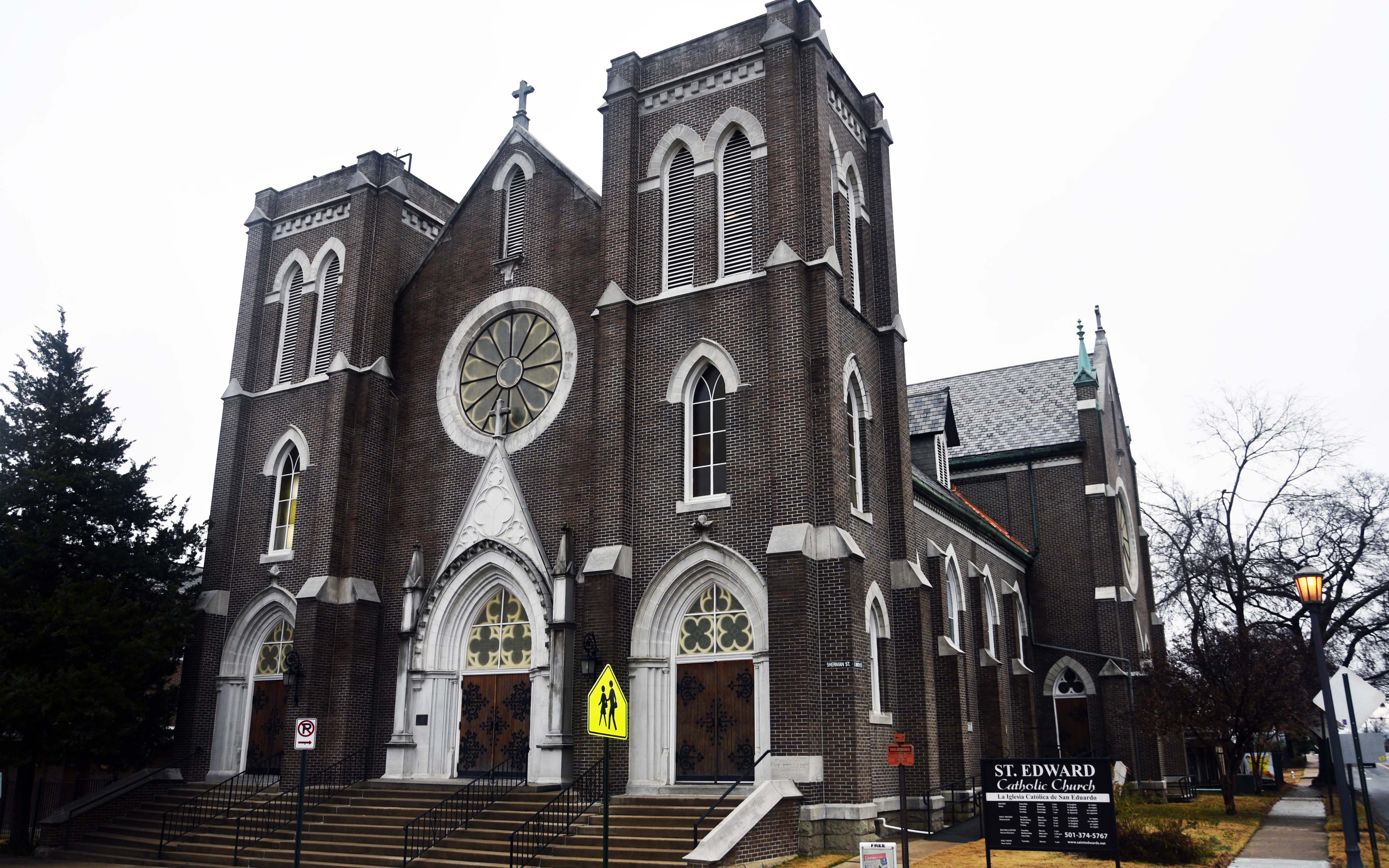Natural State of Architecture
December 23-29, 2019
By Mason Toms
St. Edwards Catholic Church
When I was younger, my family had the Christmas Eve tradition of going to listen to the choir sing at St. Edward’s Catholic Church. The thing that struck me more than the beautiful music was the stunning architecture in which it took place. However, St. Edward’s is more than just a remarkable building, it also possesses an intriguing history that makes it more than just an architectural icon for the city. The grand edifice was a sanctuary, in every sense of the word, for countless immigrants who have come to the Little Rock area over the decades.
St. Edward’s Church was created to accommodate the ever-increasing number of German Catholic immigrants coming to the Little Rock area during the 1800s. Starting in 1881, German sermons were given at St. Andrew’s Catholic Church, as it was the only Catholic Church in the city at the time. However, as the number of service attendees swelled, Arkansas Bishop Edward Fitzgerald saw the need for them to have a place of their own, a place where they would feel welcome and safe. Fitzgerald used his own money to purchase land on West 9th Street, and then donated it to the Catholic Diocese for the expressed purpose of creating a new German Parish. By 1885, an initial church building was completed, and it was named in honor of Bishop Fitzgerald due to his generous gift and his hard work. However, not long after the congregation began holding services in the new building, structural issues started to become apparent. Before too long, it was clear that another building would soon be needed.
For their new building, the church turned to notable architect, Charles Thompson, for the design. Thompson was a native of Danville, Illinois, who came to Arkansas in 1886 to take a drafting position with architect, Benjamin Bartlett. Eventually, he would become Bartlett’s partner, and would go on to become arguably the most prolific architect in Arkansas’s history. His work included not only churches, but also numerous houses, courthouses, and commercial buildings. Though he passed away in 1959, his legacy continued after him in the firm he created, which lives on as in the Little Rock firm of Cromwell Architects Engineers, the oldest continuously operating firm west of the Mississippi.
Begun in 1901, the new church was designed in the Late Gothic Revival style of architecture. Gothic architecture saw a resurgence of popularity in the 19th century, due in part to the French architect and writer, Viollet-le-Duc, and his work restoring the great Gothic cathedrals of France that had been damaged in the French Revolution. By the late 1800s, Gothic Revival was seen as the only appropriate style for church architecture. The style is best seen in the pointed arch windows and doors, rose windows, and elaborately carved western portals on the church. However, one of the signature features of the style, which was part of the original design of the building, never made it into material form, twin spires on the western towers. Unfortunately, the congregation ran out of funds before they could build the final pieces, which would have doubled the height of the front façade. When the congregation dedicated the new building in 1905, it was almost instantly a new landmark for the city, and a new center for the German community.
Over the following decades, the German congregation assimilated into the greater community of the city. However, a new group of immigrants have found a spiritual and communal home in century old building. In recent years, the beautiful edifice has become the center of Hispanic Catholics in the capital city. Even after 134 years of existence, the parish of St. Edward’s is still welcoming and serving those who are trying to make a new home in our beautiful city. Sometimes the natural state of architecture is creating a space where we can feel at home despite being far from it.
PHOTO CAPTION:
For Charles Thompson, St. Edwards Catholic Church is the most academically formal example of the Gothic Revival in his portfolio of work. The building was listed on the National Register of Historic Places in 1982. (Photo Provided)



